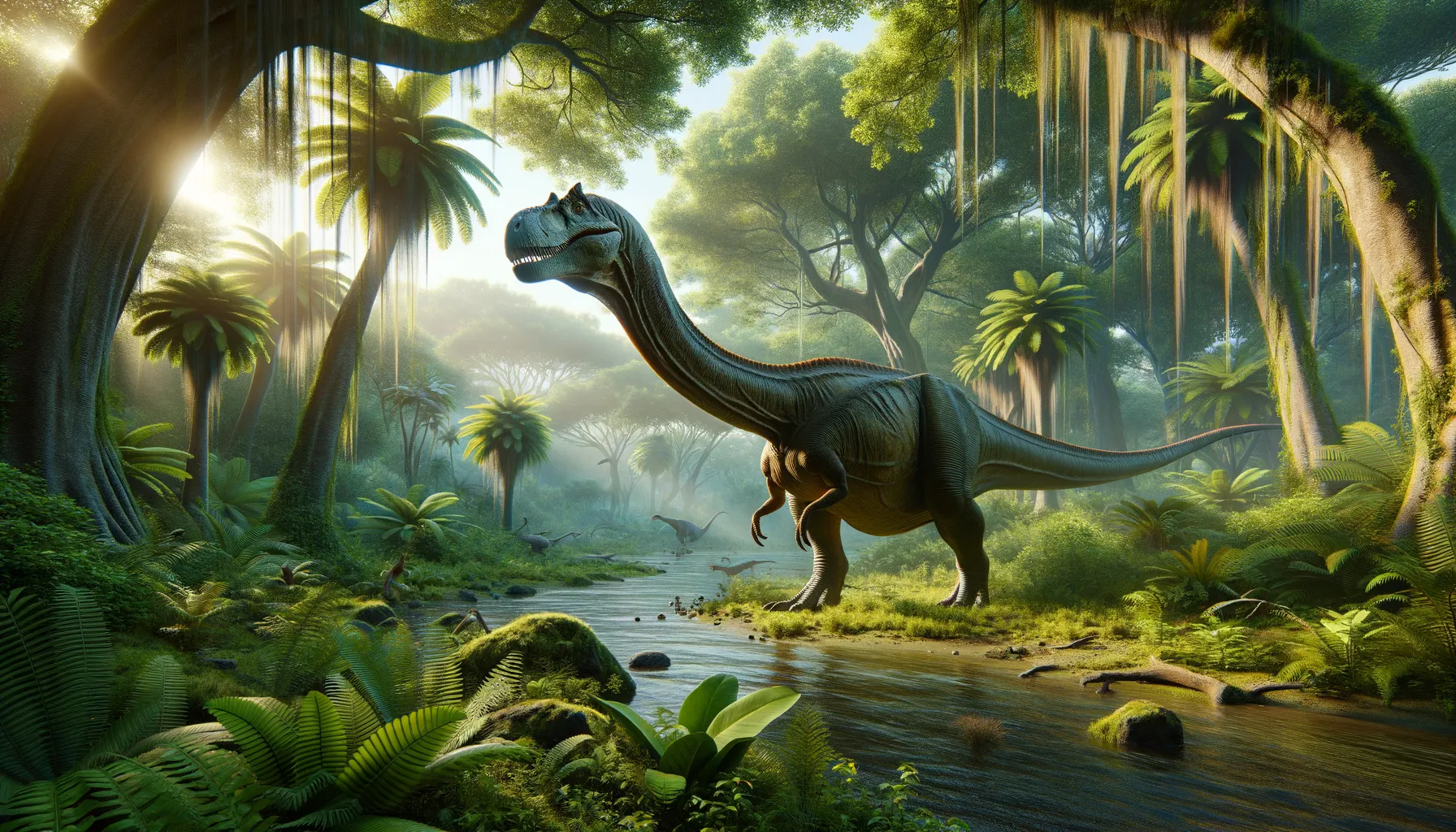
Oshanosaurus
Giant of the Cretaceous greens.
Period
Cretaceous
Length
Roughly 15 meters or 50 feet long.
Height
About 6 meters or 20 feet tall.
Weight
Approximately 15,000 kilograms or 33,000 pounds.
Oshanosaurus was a large, herbivorous dinosaur that lived during the Late Cretaceous period. Its massive body and long neck helped it reach vegetation in its forested environment. As a peaceful creature, it often lived in groups for protection. This dinosaur is particularly famous for its unique bone structure, which provides valuable insights into its lifestyle and environment. Scientists have extensively studied its fossils, contributing to a greater understanding of this era.
Diet
Oshanosaurus primarily consumed plant material, including leaves, stems, and possibly fruits. Its long neck allowed it to reach high vegetation, making it an efficient feeder in its forested habitat.
Hunting
As a herbivore, Oshanosaurus did not hunt for prey. Instead, it focused on foraging in areas rich with vegetation, often moving slowly to graze through thick foliage.
Environmental challenges
Oshanosaurus faced challenges such as varying climate conditions, including periods of drought, which affected food availability. The presence of large predators also posed a threat, requiring Oshanosaurus to stay within groups for safety. Despite these challenges, its size was a deterrent to many predators.
Speed
Relatively slow, relying on bulk and strength.
Lifespan
Estimated at around 50 to 70 years.
First discovery
Discovered in the late 20th century in Mongolia.
Fun Facts
- Oshanosaurus was a herbivorous dinosaur, which means it fed on plants.
- This dinosaur lived during the Late Jurassic period, around 163 to 145 million years ago.
- Oshanosaurus had a long neck, similar to a giraffe, which helped it reach leaves high up in trees.
- It was part of the Sauropod family, known for its massive size and long tails.
- Fossils of Oshanosaurus were first discovered in what is now present-day China.
- Despite its enormous size, Oshanosaurus was a gentle giant roaming ancient forest landscapes.
- This dinosaur is thought to have moved in herds, traveling together for protection and social interaction.
Growth and Development
Oshanosaurus likely experienced a rapid growth phase during its early years, reaching maturity within 10 to 15 years. As a large dinosaur, its growth required substantial nutritional intake, which it managed by consuming large quantities of vegetation. This growth pattern helped it become too large for most predators to tackle.
Habitat
Oshanosaurus thrived in lush, forested environments where it had access to abundant plant life. The dense vegetation offered both food and protection. Seasonal changes in this habitat influenced its migration patterns and group behavior.
Interaction with other species
Oshanosaurus likely coexisted with other herbivorous dinosaurs, sharing the rich resources of its forested habitat. Predator encounters were frequent, especially with smaller carnivorous dinosaurs. These interactions required it to constantly be alert and rely on group dynamics for protection.
Natural lifespan
Oshanosaurus had a natural lifespan of around 50 to 70 years.
Reproduction
Oshanosaurus reproduced by laying eggs, with nesting likely occurring in secure locations away from predators. Parental care, if present, may have involved guarding the nest against threats. Clutches were possibly large to increase the chances of offspring survival.
Social behaviour
Oshanosaurus exhibited group behavior, which provided protection and improved foraging success. Its social structure may have been loosely organized, with individuals cooperating to some extent. Group living helped them fend off predators and navigate their environment.
Fossil locations
Fossils of Oshanosaurus have primarily been found in Mongolia, offering significant insights into the region's prehistoric ecology. Additional discoveries may have occurred in adjacent areas, adding to the understanding of its range during the Cretaceous period.
